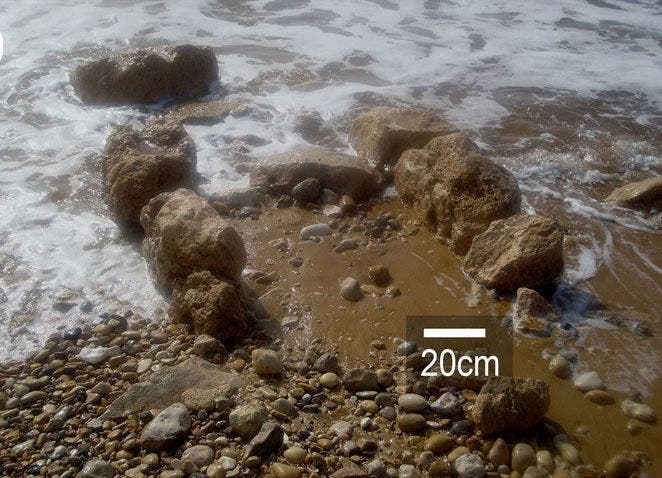Off the shores of northern Israel, archaeologists have discovered at least sixteen Neolithic settlements from 9,000 – 6,500 years ago. What’s special is that at the site, researchers also found evidence of what is possibly one of the first attempts to protect a human settlement against sea level rise. The wall is over 100 meters long — an indication that this ancient village truly fought against the sea.

Man against the sea, it’s a tale as old as time. Usually when we envision this story, we see man trying to explore and conquer the sea but sometimes, the sea strikes back. Sea level rise is currently a major problem for the world’s coastal environment due to man-made climate change, but other (natural) sea level rise events have happened in the past.
The Tel Hreiz settlement in Israel is mostly underwater nowadays. But back in its heyday, it would have been a thriving and bustling area. Archaeologists excavating the underwater site have found plenty of architecture and evidence from the day, as well as human remains. But perhaps the most interesting structure on the site was a long, boulder-built wall located seaward of the settlement.
The wall was first exposed by winter storms in 2012. Archaeologists measured, photographed, and documented it before the sea covered it with sand once again. In 2015, however, another storm partially uncovered the structure again, giving researchers another chance to investigate it.
The boulder wall stretches over 100 meters (or yards) and is currently three meters below sea level and 90 meters offshore. Back during Tel Hreiz’s occupation, that would have been the “swash zone”, an area alternately covered and exposed by incoming waves.

The seawall comprises large boulders of limestone and aeolianite, neither of which are naturally found in the area — so they would have been brought there for a purpose and used to build a wall. Why anyone would have built a wall facing the sea thousands of years ago leaves little to the imagination.
The inhabitants of Tel Hreiz would have gone through a lot of trouble to defend their village. They carried the boulders for several kilometers (the closest sites are 3.8 and 1.6 km away, respectively), planned the construction and put it all together. They bravely fought against the sea… and they lost.
At the time, the Mediterranean coast experienced sea level rises of 12-20 cm approximately every 30 years, due to post-glacial sea rise. The sea rise would have increased the frequency of destructive storms, and despite the admirable work put into the seawall, the wall proved unable to hold back the Mediterranean Sea. Still, researchers note that the structure is a testament to its builders’ creativity and capacity, and that it’s unique for its history.
“There are no known or similar built structures at any of the other submerged villages in the region, making the Tel Hreiz site a unique example of this visible evidence for human response to sea-level rise in the Neolithic,” the authors write.
The finding also carries a cautionary tale for our modern society. In 2019, global mean sea level was 3.4 inches (87.6 millimeters) above 1880 levels — it’s not as much as what the people of Tel Hreiz had to deal with, but it’s comparable. Much of this rise (about a third) happened in the past three decades, when climate change truly started to kick in.
Nearly 40% of the world’s population lives on the coast, and as long as temperatures keep rising, sea levels will continue to rise as well, putting billions of people at risk.
The study “A submerged 7000-year-old village and seawall demonstrate earliest known coastal defence against sea-level rise” was published in PLOS ONE.









